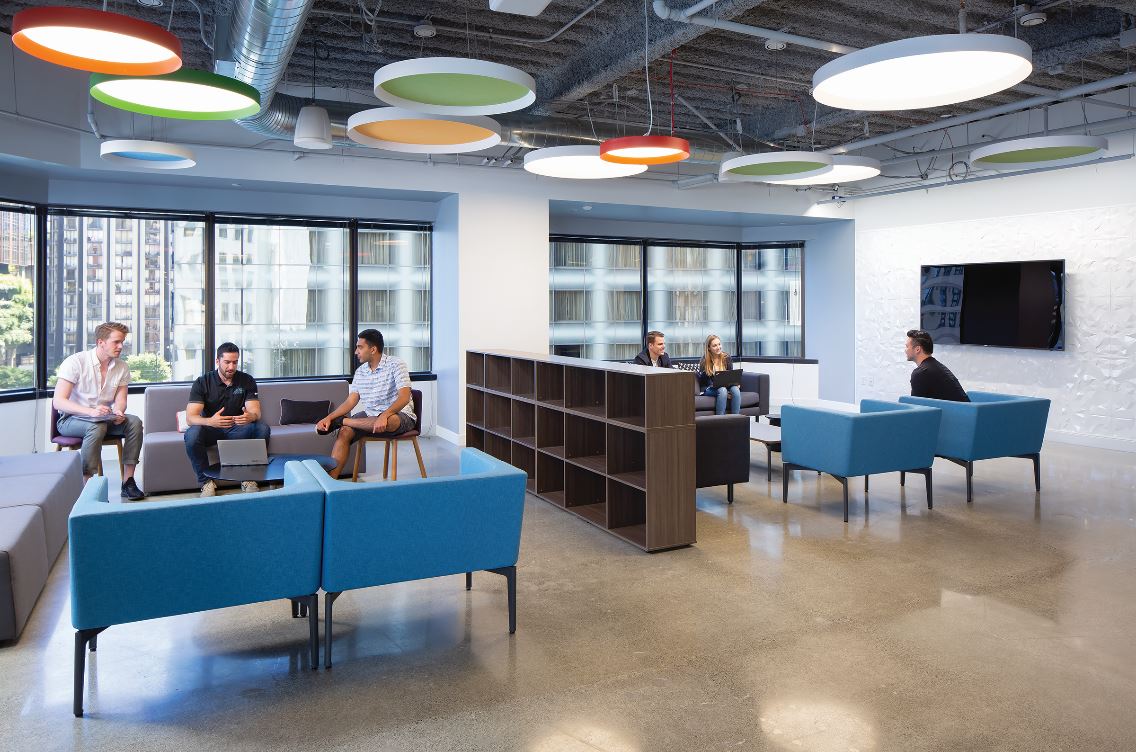Acoustics must be taken into account in addition to aesthetics while constructing a workspace. Although noise is an inevitable aspect of working in an office, it can also be annoying, upsetting, and distracting, which can cause stress, lower productivity, and even disease. Office workers’ main complaints are related to noise.
Why is Noise Reduction Important in a Shared Office Setting?
In a shared workplace setting, it’s critical to keep noise levels down because loud workstations can induce distractions that lower output. In a shared workspace, sounds such as talking, music, ringing phones, and computer noises can all make it difficult for others to concentrate.
Not only can noises cause distractions, but they can also incite conflict and interpersonal problems among coworkers, which negatively impacts output. Teams can also suffer when people can’t collaborate successfully due to conflict at work. Teams are more productive and employees get along better when there is less noise and interruptions.
Recognising the Origins of Unwanted Sounds in the Office
In a shared office setting, noise can originate from several sources such as conversations and phone calls, music players and radios, group discussions taking place nearby, computer keyboards and digital system noises, background noise, and general foot movement in the vicinity of an open workplace.
It’s important to remember that noise moves and reflects off of surfaces with reflections. Because sound waves bounce off of hard flooring, metal office furniture, walls, and ceilings, even sounds from across a shared office area may sound closer than they are.
Recognising the Kinds of Noises Made by People and Technology
Because people and office equipment inherently produce noise, it is impossible to remove all sounds from a shared office setting. However, it might be useful to locate the source of sounds. The high-pitched whine of electronic equipment is accompanied by some level of noise from footfall as someone walks by a desk. Keyboards on computers and other office equipment can make noise.
Generally speaking, these noises don’t bother me in and of themselves, but when a lot of people share an office, they do. Small noises can become irritating when multiple individuals are coughing, rustling papers, or typing on keyboards simultaneously around a shared office.
External Sources of Noise
Outside sounds from the building can also be a source of distraction, in addition to those coming from within a shared office area. Outside a shared office area, traffic noises such as aeroplanes, cars, sirens, automobile horns, and other vehicles can be annoying and reduce concentration and productivity.
These noises are especially problematic in shared office spaces that are ground floor and close to a busy road or transit centre. These issues are common in urban shared office spaces, and it can be difficult to reduce outside noise in shared workstations with plenty of windows.
Comprehending the Way Sound Spreads in an Office Environment
Different techniques allow sounds to travel through an office environment. Certain noises are directed, meaning that the noise waves they produce originate from a particular place. Some noises are reflective, which means that they cause sound waves to reverberate off of hard surfaces that reflect light.
Because they bounce about, reflecting sounds can be difficult to deal with. Hard floors and metal office furniture tend to reflect and magnify sound waves, which can carry some disturbing sounds over great distances in a shared office setting. Sound reverberation can also be influenced by ceiling height, shared office area breadth, and depth.
Techniques for Cutting Down on Noise in a Shared Office
A shared office can benefit from a variety of noise-cancelling techniques, such as sound-deadening dividers, white noise machines, acoustic panels, mineral wool insulation, and noise-cancelling headphones or earplugs.
Soundproof panels with insulation made of mineral wool
It is possible to lessen sound reflections in a shared office by placing acoustic panels in suitable locations. These panels are intended to capture sound waves and prevent them from bouncing off surfaces, combined with mineral wool insulation, to lessen the spread of noise. In a shared office, acoustic panels can be mounted on the walls or utilised to separate spaces into cubicles or partitions.
White noise generators and ambient audio
It is possible to block out background noise in a shared office by using white noise machines and other similar devices. Be cautious not to allow the noise produced by background music or white noise machines to become distractions in and of itself if you employ them. When using open-back headphones to listen to music, be mindful of the volume level since even these devices can leak sound and cause workers close to becoming distracted in peaceful places.
Offices with open floor plans with quiet areas designated
In a shared office setting, open-plan office spaces are typical; yet, these kinds of layouts can make it challenging to reduce distracting noise. Some open-plan shared offices will feature quiet zones where noise is intended to be kept to a minimum to combat unwanted noise and distractions.
Utilising sound privacy solutions, like cubicles or partitions
The diffusion of annoying sounds in a shared office can be significantly reduced by the use of cubicles and dividers. Sound waves can be further stopped by partitions and cubicles that use mineral wool insulation or acoustic panelling before they have an opportunity to distract people.
Purchasing high-quality earplugs and headphones
Modern technology is used by high-quality noise-cancelling headphones to cut down on background noise. If you’re not interested in spending money on high-quality headphones, regular earplugs can help block out distractions and lessen background noise.
Using houseplants to help absorb noisy noises
Sometimes, placing indoor plants around a shared workstation helps reduce distracting sounds. Though they won’t completely stop sound, large, leafy plants prevent reflected sound waves from bouncing around shared workplaces.
Maintaining order in work areas to avoid superfluous sounds
Keeping your office organised can help you create a calm environment. Sounds like paper rustling and drawers opening and closing to gather supplies might be produced by messy workspaces. When a workspace is organised, employees can locate what they need fast and can avoid making a lot of noise by moving things around.
Conclusion
Effective acoustic design plays a pivotal role in minimising noise disturbances within shared workspaces, fostering productivity and well-being among occupants. By implementing strategies such as sound-absorbing materials, strategic layout configurations, and thoughtful acoustic planning, organisations can create environments conducive to focused work and collaboration.
As the demand for flexible and open workspaces continues to rise, prioritising acoustic considerations will be paramount in optimising the functionality and comfort of these dynamic work environments. If you’re looking for Office on Rent in Pune, then click here.




